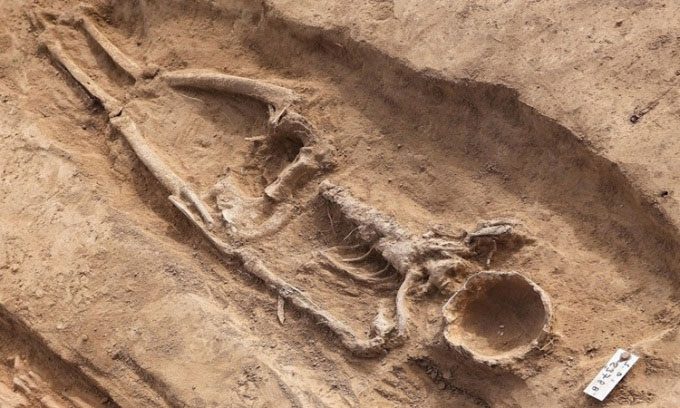Archaeologists have discovered the remains of a woman with a missing facial skeleton buried next to her noble husband, dating back 1,000 years.
The skeletons of a man and woman buried beside each other in Germany surprised archaeologists when they found the skull of a completely hollow skeleton. The archaeological team made this unusual discovery while excavating near a 1,000-year-old royal palace established by Emperor Otto I of the Holy Roman Empire in Helfta, a village in the state of Saxony-Anhalt, Germany, according to a report by Live Science on November 28.

The “faceless” skeleton of a German noblewoman from the 9th century. (Photo: Jan Woitas/dpa)
The two skeletons were buried directly next to each other, indicating they may have been a married couple, according to Oliver Dietrich, a researcher at the Berlin Archaeological Institute in Germany and a member of the excavation team. The woman is slightly shorter than the man, standing at about 1.55 meters tall. What caught the research team’s attention the most was the missing facial bones of the skeleton. However, further analysis revealed that the skull was not excavated but was likely damaged later due to the grave being quite shallow, lying directly beneath the surface layer of soil.
The skull of the woman was not intact due to external impacts, such as from plowing or small animals digging burrows in the grave, according to Felix Biermann, a professor of archaeology at the University of Szczecin, Poland.
The man was buried with several grave goods, including iron tools such as knives and belts, suggesting he may have been a noble at the time of his death. The research team concluded that the man lived in the 9th century and was an official within the Frankish castle or fortress that existed at that time. Since he was not buried with weapons, it is likely he was more of an official than a soldier. In contrast, the remains of the woman did not accompany any burial goods, possibly due to prior theft.


















































